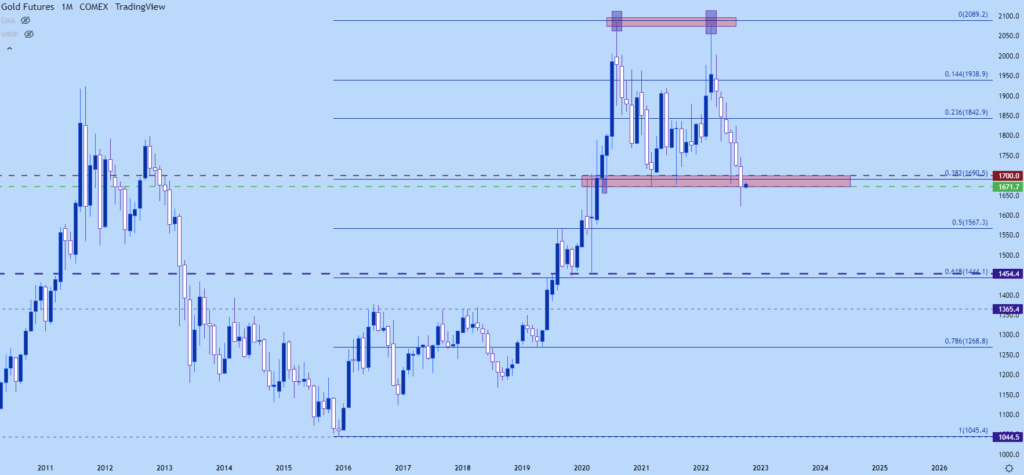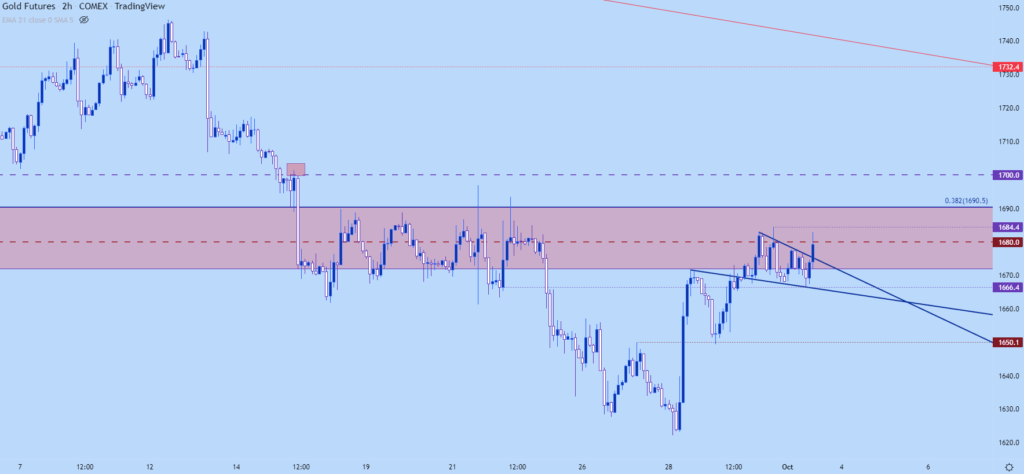Q4 begins with a glimpse of optimism as bond rates come down, easing pressure on equities and gold. After a terrible third quarter for risk assets, US Treasury Yields have began the fourth quarter with a dip, providing some optimism. That has relieved pressure on a variety of sectors, with commodities and stocks playing a crucial role. The more important issue is, of course, whether this represents the end of an existing trend or the beginning of a new one. I believe that the majority of people worldwide are more likely to believe the former than the latter. Therefore, whatever boost we see in risk assets due to declining rates appears to be a passing trend in the overall scheme of things.
If pullbacks do continue, they may abruptly reverse course whenever we encounter the next significant factor that serves as a reminder to everyone that the Fed hasn’t stopped raising interest rates yet. The 10-year note’s yield last week hit a brand-new 11-year high of 4%. This occurred on Thursday, the same day that gold hit a new two-year low and bottomed out.
And with rates still on the rise, gold’s environment is still unfavorable. A change in the supply/demand equilibrium of gold results in the development of longer-term trends, as we’ve seen this year as the Fed has increased their hawkishness in an effort to combat inflation. Higher rates mean more opportunity cost for being invested in non-yielding instruments, which may not impact every gold investor but does impact some.
It may not be a coincidence that gold prices breached the bottom of the double bottom structure we observed at last week in the same month that the Fed increases QT while keeping interest rates higher. Given that the neckline of the pattern is in a location where previous resistance has now converted into support, this has bearish implications over the longer term. Prior to the pandemic, the identical region of resistance today was in-play, helping to establish the highs for gold. It swiftly returned to action in early 2021 as support, holding through several inflections in the eighteen months that followed. That is, up until two weeks ago.
Weekly Gold Price Chart

LONGER-TERM GOLD
The longer-term theme is more appealing when the chart is seen from a distance, with attention given to the most recent breakdown of the double top formation’s neckline support. This also provides some context for potential future bearish scenarios, focusing attention on the level of 1567 and, perhaps more importantly, the region around 1454, which is in close proximity to a series of swing lows from November 2019 to March 2020 and coincides with the 61.8% Fibonacci retracement of the major move from 2016 to 2020.
Monthly Gold Chart

SHORTER-TERM GOLD
Generally speaking, traders want to aim to sell resistance and buy support, as I said in the article from last week. There are breakout methods, of course, that aim to do the exact opposite: sell at prints of recent lows or purchase when prices push up to recent highs. However, this recent negative run in gold has made that breakout style appear extremely dangerous in my opinion. Therefore, gold bears must exercise patience since pullbacks may be particularly difficult to endure. An example of this can be seen in the first two weeks of September, when gold surged to $1746 after a support test at the psychological level of 1700 earlier in the month.
And given that gold is now experiencing a short-term correction and may have more space to go, that price might return to the picture in the near future. Gold found higher-low support last week near previous resistance, indicated at around 1650. This occurred soon after a higher-high resistance test, and bulls have kept the sequence moving thus far this week.
To begin the week, there is a short-term falling wedge that has bull flag tendencies. This concentrates attention on a push upward to resistance levels around 1690 or maybe even 1700. Again, traders will want to study price activity to get a sense that sellers may be leveraging that rebound to position-in to longer-term trends. A move up to either of those resistance levels may possibly re-open the door for longer-term bears.
Two-Hour Price Chart for Gold


